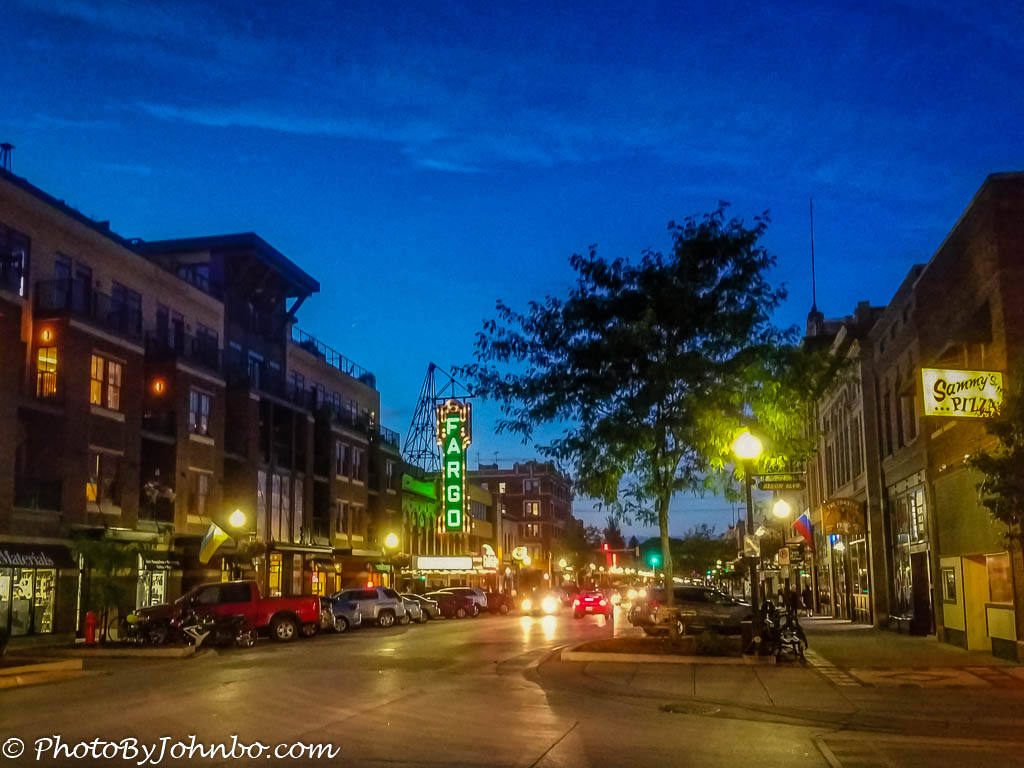
This week, Ann-Christine asks us to consider artificial lighting in our photography. You can read her entire challenge post here. For my challenge-response, I decided to use only images captured by my cell phone over the years.
As a landscape photographer, often those shots for me are at night or during those twilight times around dusk and dawn. My opening photo, for example, features an early evening image of downtown Fargo, North Dakota. It was still light enough for the sky to contain some of that blue hour coloring, but the scene is lit completely by those artificial city lights.
Modern cell phone cameras are amazing in their technical abilities, not the least of which is low-light photography. The image above was created using the light from two of those artificial LED light candles.
We spend lots of time around the holidays decorating with light. In our Arizona neighborhood one Christmas, we found this car and trailer decorated nicely for the holidays, and completely road-worthy.
Our Christmas display consists of a small holiday village and a Christmas tree. I’d captured this image to test the depth of field function of one of my cell phone cameras. I was impressed with the bokeh provided by the tree in the background.
Every winter, one of the local Fargo banks uses blue lights in the trees and along the building’s roofline to produce a beautiful look that is enhanced even more once the snow falls. Though it could be considered a holiday display, it is not turned off until spring.
My final image was captured in San Antonio, Texas while I was on an evening river cruise on the city’s famous River Walk. The lights along the walk and the lights from the building provide a reflection in the river that lights the entire lower part of the image.
For a closer look at this week’s images, please click on one of the photos to view them in HD on my Flickr site and to scroll through the entire gallery.
One more note of postscript, Lynn and I have just finished our first week of a four-week road trip, traveling with my niece and her husband. I am gathering many images for future sharing, and in our travels, I apologize for not keeping up with my own blog reading, so if I seem scarce in commenting on the many friends I follow, rest assured, I’ll be catching up when we get home again in early October.
John Steiner






The second photo is superb (the book, wine-glasses and spectacles). You got a very painterly effect here and I can hardly believe it’s been take with a phone camera. Maybe I should change my phone!
The newer smartphones have amazing cameras, but digital photo tools like Light room and Luminar bring out the best in any photo!
Thanks for stopping by and commenting.
The photos here taken with your cell phone are truly remarkable! Following your example, I have been using my Samsung Galaxy phone more and more, but have not tried low or artificial lighting yet. Soon though.
I am sure you will be happy with the results.
I hit Enter too soon… which model Samsung do you have?
Like others I am impressed with the quality of your cell phone (I would say mobile phone 😆 ) photos! I struggle to take good photos with mine, even though it’s a fairly recent model, because I find it hard to compose without a viewfinder – the screen is very difficult to see. That’s where these low light artificial light photos come into their own I guess, because the screen is easier to see in those conditions. I should try more, based on your success!
It is hard to see the screen in bright sunlight. I took a few photos with it today as we are traveling through Yosemite Park right now.
These are spectacular – with a cell phone! I have a Samsung, but an older model, but still use it in low light as it works wonders there. Love your choices, and the last one with warm light and golden reflections, is my favourite.
Thank you! Samsung does a great job in low light situations.
🙂
Excellent shots, John.
Thank you for taking a moment to view and comment.
Welcome John
The second photo is lovely, John. I love all the nightlight photos. We were at the River Walk a long time ago.
Thank you for stopping by and thank you for the compliment.
Beautiful artificial lighting pictures John. I haven’t tried using my cell phone. I guess I just need a camera in my hand. Enjoy your trip.
Thanks!
😊
The Christmas lights made me smile.
A welcome surprise that we saw on one evening, and never saw again. 🙂
Wonderful post John. I’m amazed you did all of them by cellphone. Did you do much post processing? Loved the book image especially
Thank you! I’ve gotten my post processing steps down to only a couple minutes each in Lightroom and Luminar AI.
For awhile, Luminar wasn’t working correctly for manual processing, but allowed me to save a preset I created. Now that I have that done, the initial processing takes a few seconds, then only a minute or two to tweak if it needs something more than changing my image style, (e.g. removing power line, erasing an unwanted object, changing skies, etc.)
Great series, John! I love the mage you captured from San Antonio Riverwalk!
Thank you! Fun challenge!